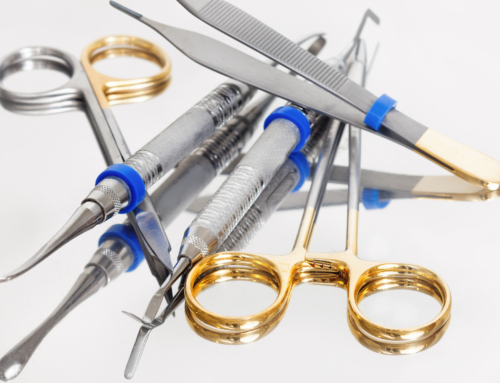Brief History Of Gold
At Elite Luxury, we consider gold to be central to our lives. This naturally occurring mineral has captured our fascination for thousands of years, and we wanted to explore how and why. The rarity of this precious metal, mined from within our planet for centuries, maybe the reason for man’s obsession with it.
As of 2021, humans have discovered only around 244,000 metric tons of gold, with 187,000 of it historically produced and the remaining 57,000 being underground reserves. If one were to melt down all the discovered gold, it would fit into a cube measuring 28 meters on all sides. The three countries that have produced the most gold in the world are China, Australia, and South Africa.

Diverse History Of Gold
Gold has a history so varied that it may surprise you. Here is a brief timeline of humanity’s historical relationship with gold.
•Around 4000 BC in Europe, people knew gold, and they used it mainly for ornamental and jewelry purposes, in addition to worshipping Gods. It was probably first discovered in streams and rivers, glistening in the sun and catching the eye.
• Around 1500 BC, the Roman Empire was the first to use gold as a commodity for international trading.
• Egypt created what was called the Shekel, a gold coin which weighed 11.3 grams. This became the standard unit of measure in the Middle East.
• Around 1200 BC, Egyptians discovered that Gold could be alloyed with other metals. This made it stronger and allowed for other colour pigments to be introduced.
• The first minting of gold coins began in Lydia of Asia Minor around 560 BC.

Early gold coins
• In 50 BC, the Romans issued a gold coin called the Aureus. Hailing from the Latin word for gold, Aurum. This is where the gold chemical symbol of Au comes from in the periodic table.
• A thousand years later in 1066, William the Conqueror of Normandy became the first Norman King of England, and with his conquest came a new metallic coin-based system of currency in England.
• In 1284, Britain issued its first gold coin, ‘The Florin’.
• While at the same time, across Europe, the Republic of Florence, known as modern-day Italy, issued the first gold Ducat which became the most popular currency and remained so for another five centuries.
• America struck its first gold coin in 1787 by goldsmith Ephraim Brasher.
Source: Brian Dowd. Gold the most precious of metals – Focus Economics
https://www.focus-economics.com/blog/gold-the-most-precious-of-metals
Gold Rush
One of the most coveted and sought-after minerals on earth, man has always had a fascination and obsession from the time of the ancient Incas of Peru to the American Gold Rush which ran from 1848-1855.

Gold rush poster
The Gold rush is a significant part of the history of gold because it produced one of the largest mass (international) migrations to one concentrated area in California, transforming the United States and changing the West Coast of America forever.
This led to the establishment of ‘boomtowns’, produced rapid economic growth and prosperity, and saw the emergence of new railroads, churches, banks and schools to accommodate the newcomers.

Prospecting for gold during the gold rush
Source: Norwich University online:-
https://online.norwich.edu/academic-programs/resources/historical-impact-of-the-california-gold-rush
Humans have traded and fought over gold for thousands of years and today, it is used in everything from smartphones to medicines and jewellery. Gold is also an essential industrial metal critical in computers, communications equipment, spacecraft, jet aircraft engines and in addition to many other products.
The most common uses of gold today are:
• Jewellery – around 78% of gold produced yearly is made into jewellery.
• Finances and Investing.
• Electronics and Computers.
• Dentistry and Medicine.
• Aerospace.
• Medals and Awards.
Source: Eric Sepanek. 6 Most common uses for gold.
https://www.sbcgold.com/blog/top-6-common-uses-for-gold/
Usage of Gold in the Modern World.
Healthcare
Over 5000 years ago, in Alexandria, Egypt, people recorded the earliest use of gold for medical purposes by ingesting it for bodily, mental, and spiritual purification. Nowadays, gold finds applications in various ways for medicine and technology.
Gold Nanoparticles are at the heart of modern medicine in testing, disease detection and treatment. Gold-based drugs have been developed and used to treat illnesses such as Rheumatoid Arthritis for many years. Research is underway into the role it can play in cancer treatment, enabling gold nanoparticles to deliver cancer drugs straight into the tumour itself directly. Plus, early detection in not only cancer but Aids/HIV too.

Gold nanoparticle
Used in many surgical procedures, gold is the choice implant material for many surgeons due to its high degree of resistance to bacteria, such as the inner ear, wires for pacemakers and gold-plated stents used in the treatment for heart disease. Without the use of gold, many components in medical surgery would not be as effective as they are, including pacemakers and ventilators.

Gold plated stent for heart surgery
Electronics & Aerospace
Being the world’s most reliable conductor makes it the best metal in use for Electronics and Aerospace.
Gold is resistant to rust and corrosion, which makes it the perfect substance for Technology, especially in solid state electronics. Circuit boards, mobile phones. It can be found in connection strips, wires, soldered joints, and relay contacts.

Electronic circuit board
Aerospace
When thinking of aerospace and NASA, one may conjure up images of deep dark space with bright reflective equipment that often shines with gold. Gold finds valuable and specific uses in the aerospace industry.
This very year 2021, Nasa will launch the James Webb telescope, built with 18 reflective hexagonal mirrors, each coated with a microscopically thin reflective layer of gold, using gold’s ability as a great reflector of infrared light. Not only is it used on the telescope but also on the interior workings of windows and external reflectors. Gold is also used in astronauts’ helmets. Particles of gold are embedded into the visor of the helmet, protecting astronauts from certain types of radiation and heat from the Sun. Gold even helps to keep astronauts cool!

Astronaut visor with embedded gold particles
Emerging Technologies
Additionally, Green Technology already uses gold in catalytic converters to clean vehicle emissions. Moreover, researchers are using it to improve solar cell efficiency and create better fuel cell catalysts.
One thing is for certain, gold is hard to replace, and once used, it is almost impossible to go back to using substandard material. Emerging uses for gold nanoparticles include catalysts in industrial processes, pollution reduction in air and water, fuel cells and lithium-air batteries and even invisibility cloaks.
Some recent experiments with nano gold by scientists in Australia have uncovered bizarre optical properties of a new material they call plasmene. One thing is certain, gold is here to stay and promises to provide a very innovative and exciting future.
For our gold plating services, please click here.
Additional reading: –
https://www.newscientist.com/article/mg22429931-900-gold-origami-exerts-strange-power-over-light
References: –
Metals in space exploration
https://www.apmex.com/education/science/how-precious-metals-are-vital-to-space-exploration
Gold – Not Just for Jewellery
https://www.straterra.co.nz/mining-in-nz/importance-of-mining/everyone-uses-minerals/gold-not-just-for-jewellery
All About Gold.
https://www.gold.org/about-gold/gold-demand/sectors-of-demand/uses-of-gold




